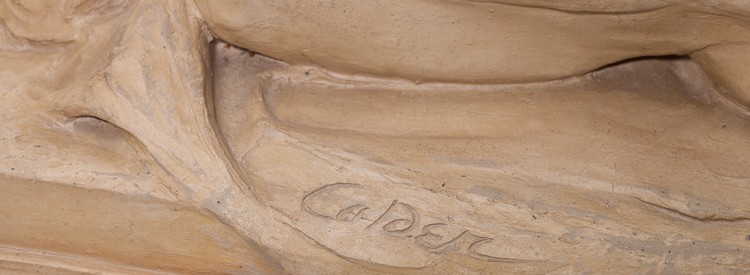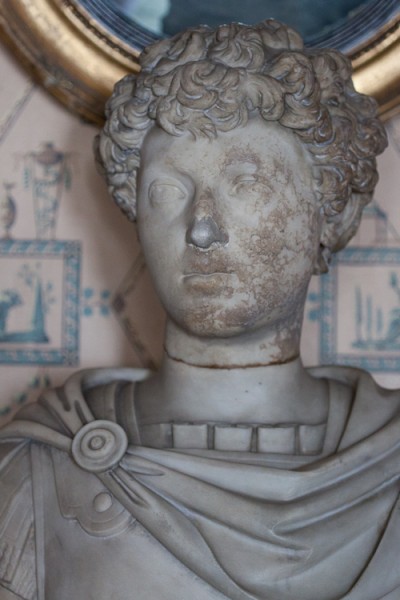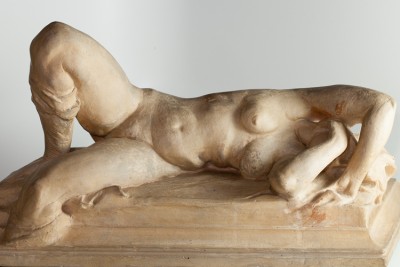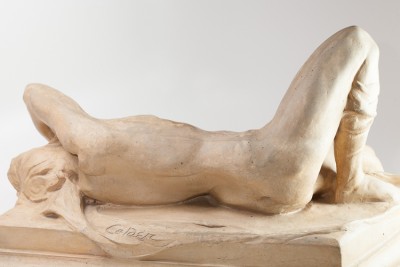It was fashionable during the late 19th century to furnish a home with objets d’art – the Victorian legacy was one of decoration and ornamentation, although the Popes were somewhat ahead of their time and adopted a more restrained approach.
As he was with the paintings that grace the walls of Hill-Stead, Alfred A. Pope was discerning in his choice of three-dimensional art, concentrating primarily on three types of sculpture: animal forms, ancient busts, and contemporary representations of the human figure. He also limited the scope of these pieces to fit on table tops and mantels. The sculptures complement the paintings, furnishings and other decorative objects without overwhelming them.
Bust of Marcus Aurelius
Marble, ca. 180 AD (head); 19th c. (neck & shoulders)
Alfred Pope purchased this marble likeness of a youthful Roman Emperor Marcus Aurelius in Rome for 1,600 lire, while on a European Grand Tour with his wife and daughter in 1889. It was authenticated as an antique by the seller, Guiseppe Mancini. The head is believed to date to ca. 180 AD, while the neck and shoulders are from the 19th century. During the Popes’ travels through Italy, they visited several ancient ruins and archaeological sites. Theodate notes in her diary that she was reading Marcus Aurelius while in Florence.
Marcus Aurelius was Emperor of Rome from 161 to 180. He was the last of the “Five Good Emperors,” and is also considered one of the most important Stoic philosophers. Marcus Aurelius’ work Meditations, written in Greek while on campaign between 170 and 180, is still revered as a literary monument to a government of service and duty.
Antoine-Louis Barye (1796-1875)
Antoine-Louis Barye was initially trained as a goldsmith, his father’s occupation. After serving in Napoleon’s army, he studied sculpture and painting and entered the École des Beaux-Arts in 1818. Like the painters Théodore Géricault and Eugène Delacroix, with whom he studied the animals at the Paris zoo, Barye exemplified the Romantic predilection for exotic and violent subjects; many of his bronzes depict wild beasts in combat. Barye inspired a school of sculptors known as the animaliers, or animal artists. Alfred Pope collected eight bronze sculptures by Barye, primarily small table-top sized versions of cats. Lion with a Serpent, the largest in the collection, was purchased for $1,200 in October, 1889. Full-size versions of Barye’s sculptures can be seen at the Louvre and at Rittenhouse Square in Philadelphia.
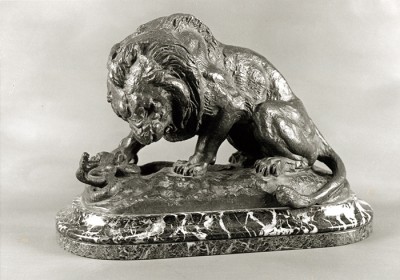 Lion with a Serpent
Lion with a Serpent
Bronze on a marble base, ca. 1838.
26 x 36 x 19 in.
Alexander Stirling Calder (1870-1945)
Alexander Stirling Calder was born in Philadelphia. He was the son of sculptor Alexander Milne Calder, and the father to renowned sculptor Alexander (Sandy) Calder. He studied at the Pennsylvania Academy of Fine Arts under Thomas Eakins and continued his studies in Paris. He returned to the Pennsylvania Academy and taught both sculpting and anatomy.
Reclining Nude Female
Plaster of Paris, date unknown
Reclining Nude Female (back)
“Calder” carved in back of sculpture
